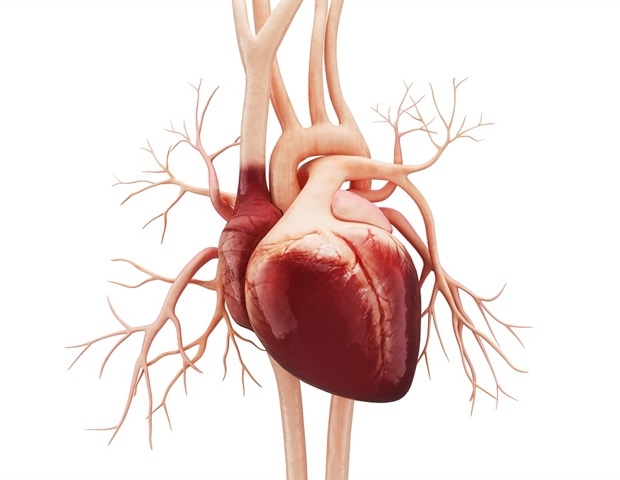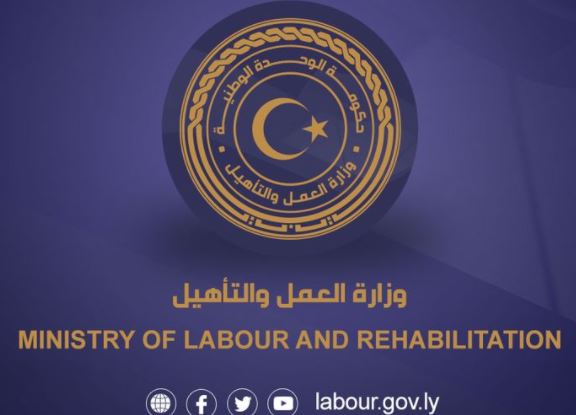Report on the Removal of the Human Rights Reporting Gateway and its Implications for Sustainable Development Goals
Executive Summary
The United States State Department has removed the Human Rights Reporting Gateway (HRG), an online portal designed for the public reporting of human rights violations committed by foreign military units receiving U.S. assistance. This action raises significant concerns regarding the U.S. commitment to international human rights standards and undermines progress toward key Sustainable Development Goals (SDGs), particularly SDG 16, which promotes peace, justice, and strong institutions.
Background of the Reporting Mechanism
The Human Rights Reporting Gateway was a critical tool for accountability and transparency, directly supporting global development objectives. Its key functions included:
- Providing the only publicly accessible, formal channel for individuals and organizations to report abuses directly to the U.S. government.
- Fulfilling a mandate under the Leahy Law, which requires the U.S. government to facilitate the receipt of information on gross human rights violations.
- Enabling the collection of detailed information on alleged abuses to ensure U.S. military aid does not contribute to human rights violations.
Impact on SDG 16: Peace, Justice and Strong Institutions
The removal of the HRG directly contravenes the spirit and targets of SDG 16 by weakening mechanisms for accountability and justice. The specific impacts include:
- Undermining Target 16.3 (Promote the rule of law and ensure equal access to justice): The portal was a direct mechanism for non-governmental actors to access a justice and accountability process. Its elimination creates a barrier to justice for victims of abuse by U.S.-funded foreign forces.
- Reducing Progress on Target 16.6 (Develop effective, accountable and transparent institutions): The deletion of a public-facing reporting tool reduces the transparency and accountability of the State Department’s processes for vetting foreign security forces.
- Weakening Target 16.1 (Significantly reduce all forms of violence): By diminishing the capacity to monitor and deter abuses, the U.S. risks enabling foreign security forces that commit extrajudicial killings, torture, and other forms of violence, thereby failing to contribute to the reduction of violence.
- Contradicting Target 16.10 (Ensure public access to information): The HRG provided a form of public access to participate in the oversight of government functions. Its removal limits this access and the protection of fundamental freedoms.
Case Studies and Affected SDG Targets
The HRG was intended to process reports on severe human rights violations, the prevention of which is central to the SDG framework. Cases that were, or would have been, submitted highlight the portal’s importance:
- Colombian Security Forces: Reports were submitted via the HRG concerning the alleged use of U.S.-supplied equipment during the suppression of anti-government protests in 2021, where dozens were killed. This directly relates to ensuring peaceful societies under SDG 16.
- Israel Defense Forces (IDF): Amnesty International was preparing to submit evidence regarding the killing of Palestinians in the occupied West Bank. The lack of a formal channel now complicates efforts to ensure accountability and protect civilian lives, a core tenet of SDG 16.
The types of abuses the portal sought to address included:
- Extrajudicial killings
- Forced disappearances
- Torture
- Rape, a violation that also undermines SDG 5 (Gender Equality)
Stakeholder Responses and Implications for SDG 17
The decision has been widely condemned by human rights experts, who argue it weakens the global partnership for sustainable development (SDG 17) by sidelining civil society.
- Human Rights Campaigners: Groups like Amnesty International and Democracy for the Arab World Now (DAWN) view the portal’s removal as a severe blow to the U.S. government’s ability to deter abuses and hold partners accountable. This erodes the multi-stakeholder partnerships essential for achieving SDG 17.
- Legislative Experts: The author of the Leahy Law amendment, Tim Rieser, stated the State Department is “clearly ignoring the law” and rendering its human rights architecture “largely ineffective.”
- U.S. State Department: The department insists it remains in compliance with legal requirements and continues to engage with “credible organisations.” It positions the move as part of a restructuring for efficiency under an “America First” policy, which critics argue de-prioritizes international human rights norms central to the SDGs.
-
Which SDGs are addressed or connected to the issues highlighted in the article?
The article primarily addresses issues related to SDG 16: Peace, Justice and Strong Institutions. It also connects to SDG 17: Partnerships for the Goals through its discussion of international military aid and policy coherence.
SDG 16: Peace, Justice and Strong Institutions
- The core of the article is the removal of the Human Rights Reporting Gateway (HRG), a mechanism designed to ensure accountability for human rights violations. This directly relates to building effective, accountable, and inclusive institutions, promoting the rule of law, and ensuring access to justice. The article details alleged abuses such as “extrajudicial killings, forced disappearances, torture and rape” which are fundamental concerns of SDG 16.
SDG 17: Partnerships for the Goals
- The article states that the “US is the world’s biggest contributor of military aid to foreign countries, supplying… arms to more than 150 nations.” This represents a global partnership. The controversy surrounding the HRG and the Leahy Law is about ensuring these partnerships are coherent with sustainable development principles, specifically the protection of human rights, which is a key aspect of policy coherence under SDG 17.
-
What specific targets under those SDGs can be identified based on the article’s content?
SDG 16: Peace, Justice and Strong Institutions
- Target 16.1: Significantly reduce all forms of violence and related death rates everywhere. The article mentions specific instances of violence that this target aims to reduce, including the “excessive use of force by security forces during anti-government protests in Colombia” where at least 47 people were killed, and the “killing of 20 Palestinians during IDF raids.” The HRG was a tool to report on such violence.
- Target 16.3: Promote the rule of law at the national and international levels and ensure equal access to justice for all. The removal of the HRG is presented as a direct blow to this target. The portal was the “only publicly accessible channel” for reporting abuses, and its deletion means victims and organizations have “no established channel” for seeking justice and accountability. This weakens the rule of law by creating less incentive for foreign governments to prosecute perpetrators.
- Target 16.6: Develop effective, accountable and transparent institutions at all levels. The HRG was an institutional mechanism for accountability and transparency. Its removal, along with the elimination of “some offices focused on human rights monitoring” and the release of a “slimmed-down annual human rights report,” points to a weakening of institutional effectiveness and transparency within the US State Department.
SDG 17: Partnerships for the Goals
- Target 17.14: Enhance policy coherence for sustainable development. The article highlights a conflict between the US policy of providing extensive military aid and its legal and moral obligation to prevent that aid from supporting human rights abuses. The Leahy Law and the HRG are mechanisms designed to ensure this policy coherence. The article suggests that the portal’s removal, influenced by an “‘America First’ foreign policy,” undermines this coherence.
-
Are there any indicators mentioned or implied in the article that can be used to measure progress towards the identified targets?
SDG 16: Peace, Justice and Strong Institutions
- Implied Indicator for Target 16.1: The article provides qualitative data that would feed into official indicators like 16.1.1 (Number of victims of intentional homicide). It explicitly mentions the “killing of 20 Palestinians” and that “at least 47 people were killed” in Colombia during protests, serving as examples of the data needed to measure violence and death rates.
- Implied Indicator for Target 16.3: The existence and accessibility of reporting mechanisms for human rights violations can be considered a qualitative indicator for access to justice. The article’s central theme—the establishment and subsequent removal of the “Human Rights Reporting Gateway (HRG)”—serves as a direct, though non-numerical, indicator. The statement that people now have “no established channel” for reporting signifies a negative trend for this indicator.
- Implied Indicator for Target 16.6: The public availability of government reports and accountability mechanisms is an indicator of institutional transparency. The article implies a negative trend by noting the State Department released a “slimmed-down annual human rights report which critics said omitted alleged crimes by US allies” and removed the public-facing HRG portal.
SDG 17: Partnerships for the Goals
- Implied Indicator for Target 17.14: The existence of national mechanisms to ensure policy coherence for sustainable development (Indicator 17.14.1) is directly relevant. The article discusses the “Leahy Law” and the HRG as such a mechanism within the US government. The description of the portal’s removal and the weakening of the “entire human rights architecture” implies a regression in the effectiveness of this mechanism.
-
Create a table with three columns titled ‘SDGs, Targets and Indicators” to present the findings from analyzing the article. In this table, list the Sustainable Development Goals (SDGs), their corresponding targets, and the specific indicators identified in the article.
SDGs Targets Indicators (Mentioned or Implied in the Article) SDG 16: Peace, Justice and Strong Institutions 16.1: Significantly reduce all forms of violence and related death rates everywhere. Qualitative references to data on violent deaths, such as the number of people killed during protests in Colombia (47) and in IDF raids (20). 16.3: Promote the rule of law… and ensure equal access to justice for all. The existence (and subsequent removal) of the Human Rights Reporting Gateway (HRG) as a publicly accessible channel for reporting abuses and seeking justice. 16.6: Develop effective, accountable and transparent institutions at all levels. The removal of the HRG portal and the publication of a “slimmed-down” annual human rights report, indicating a decrease in institutional transparency and accountability. SDG 17: Partnerships for the Goals 17.14: Enhance policy coherence for sustainable development. The existence and effectiveness of the “Leahy Law” and the HRG as a national mechanism to align foreign military aid policy with human rights standards. The article implies a negative trend for this indicator.
Source: bbc.com







